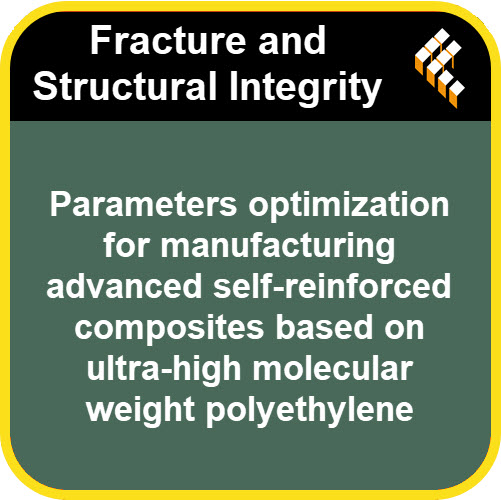Fracture and Structural Integrity: The Podcast
Stay at the cutting edge of fracture mechanics and structural integrity research with the official podcast of the Fracture and Structural Integrity journal. Join us for insightful interviews with top researchers, in-depth discussions of groundbreaking papers, and explorations of emerging trends in the field.
RSS Spotify YouTube Amazon Music
Parameters optimization for manufacturing advanced self-reinforced composites based on ultra-high molecular weight polyethylene
2025-08-19
https://www.fracturae.com/index.php/fis/article/view/5503
In this study, the relationships between processing, structure and properties of self-reinforced ultra-high molecular weight polyethylene (UHMWPE) composites fabricated via thermal pressing are investigated. By systematically varying processing temperatures (145, 155, 165, 170, 175,180 °C) and pressures (25 and 50 MPa), we demonstrate that mechanical performance is governed by the interplay between fiber consolidation and the preservation of the oriented crystalline phase. Scanning electron microscopy reveals the presence of residual voids that are independent of the processing parameters, and which lead to interfacial failure and fibrillar fracture morphologies. We identify a critical processing threshold at 165 °C (25 MPa), which yields peak interlayer shear strength (7.8–11.1 MPa), bending strength (102–130 MPa), elastic modulus (23–42 GPa), and Charpy impact resistance (72–95 kJ/m²). Beyond this threshold, however, mechanical performance deteriorates due to fiber remelting and loss of anisotropy, resulting in the composite transitioning to an isotropic UHMWPE matrix. Conversely, elevated pressures fail to improve properties due to insufficient macromolecular interdiffusion, which is the dominant bonding mechanism. These findings establish a processing-structure-property framework for UHMWPE-based self-reinforced composites that balances interfacial adhesion and crystalline alignment, while providing actionable guidelines for engineering high-performance single-polymer materials.
DownloadFiletype: MP3 - Size: 34 MB - Duration: 17:56m (256 kbps 44100 Hz)
Powered by Podcast Generator, an open source podcast publishing solution | Theme based on Bootstrap
